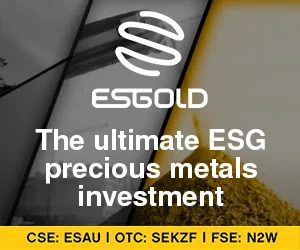The Expanding Frontier of Nano Silver: Market Insights and Future Trends
Introduction
The global Nano Silver market is on the brink of significant growth, particularly in the Internet, Communication, and Technology sectors. According to recent projections by Market Research Intellect, the market is expected to flourish from 2025 to 2032, driven by evolving consumer demands, technological advancements, and a myriad of applications across various industries. This article delves into the dynamics of the Nano Silver market, exploring its growth drivers, challenges, emerging trends, and competitive landscape.
Understanding Nano Silver
Nano Silver refers to silver particles that are smaller than 100 nanometers. Due to their unique properties, including superior antibacterial and antiviral capabilities, Nano Silver has found applications in healthcare, electronics, textiles, and antimicrobial coatings. Its effectiveness in inhibiting bacterial growth makes it a popular choice in medical devices, wound dressings, and personal care products. Furthermore, the demand for antimicrobial coatings in food packaging and consumer goods is propelling market growth.
Growth Drivers of the Nano Silver Market
Several factors are contributing to the robust growth of the Nano Silver market:
Rising Demand for Antimicrobial Products: The healthcare sector is witnessing an increased need for infection control solutions, particularly in medical settings. This demand is driving the adoption of Nano Silver-based coatings and products.
Technological Advancements: Innovations in nanotechnology are enhancing production efficiency and reducing costs, making Nano Silver more accessible to various industries. The integration of digital technologies such as AI and IoT is optimizing operational workflows and enhancing product capabilities.
Environmental Concerns: Growing awareness of environmental issues and regulatory support for sustainable antimicrobial solutions are encouraging innovation in the Nano Silver sector. Companies are increasingly focusing on eco-friendly materials and processes.
Expanding Applications: Research into Nano Silver’s potential applications in water treatment, agriculture, and textiles is further strengthening market prospects. As industries explore these diverse applications, the demand for Nano Silver is expected to rise.
Challenges and Restraints
Despite its promising growth trajectory, the Nano Silver market faces several challenges:
High Initial Investment Costs: The significant upfront costs associated with Nano Silver production can be a barrier for small and medium-sized enterprises looking to enter the market.
Regulatory Complexities: Navigating the evolving landscape of regulatory policies and compliance requirements can be daunting for companies in the Nano Silver industry.
Supply Chain Disruptions: Issues such as raw material shortages and logistical constraints can hinder market expansion and lead to increased operational costs.
Market Saturation: Developed regions are experiencing market saturation, prompting businesses to explore emerging markets where infrastructure and consumer awareness may be lacking.
Intense Competition: The competitive landscape is characterized by rivalry among key players, which can pressure profit margins and necessitate differentiation through innovation and strategic partnerships.
Emerging Trends in the Nano Silver Market
The Nano Silver market is evolving rapidly, influenced by several emerging trends:
Digital Transformation: The integration of advanced digital technologies, including AI, automation, and IoT, is enhancing efficiency and user experience in the Nano Silver market.
Sustainability Focus: Companies are increasingly prioritizing eco-friendly materials and processes to meet growing environmental regulations and consumer demand for greener solutions.
Personalization and Customization: There is a rising trend toward personalized and customized offerings, as businesses strive to cater to specific consumer preferences and industry requirements.
Strategic Collaborations: Companies are forming strategic partnerships and engaging in mergers and acquisitions to expand their geographical footprint and technological capabilities.
Competitive Landscape
The competitive landscape of the Nano Silver market is marked by intense rivalry among key players. Leading companies are focusing on product innovation, strategic partnerships, and mergers and acquisitions to strengthen their market position. Continuous investment in research and development is driving technological advancements, allowing businesses to enhance their offerings and gain a competitive edge.
Regional expansion strategies are also prominent, with companies targeting emerging markets to capitalize on growing demand. Sustainability and regulatory compliance have become crucial factors influencing competition, as businesses aim to align with evolving industry standards.
Regional Analysis
The Nano Silver market exhibits significant regional variations, driven by economic conditions, technological advancements, and industry-specific demand:
North America: Dominates the market, supported by strong investments in research and development, a well-established industrial base, and increasing adoption of advanced solutions.
Europe: Follows closely, benefiting from stringent regulations, sustainability initiatives, and a focus on innovation, particularly in countries like Germany, France, and the UK.
Asia-Pacific: Witnessing the fastest growth, fueled by rapid industrialization, urbanization, and increasing consumer demand. Countries like China, Japan, and India are pivotal in market expansion.
Latin America and the Middle East & Africa: Emerging markets with growing potential, driven by infrastructure development and expanding industrial sectors, though challenges such as economic instability may impact growth trajectories.
Conclusion
The Nano Silver market is poised for substantial growth, driven by technological advancements, increasing consumer demand, and expanding applications across various sectors. While challenges such as high initial investment costs and regulatory complexities exist, the overall outlook remains positive. Companies that prioritize innovation, sustainability, and strategic partnerships will likely thrive in this dynamic and evolving market landscape.
As we look ahead to 2025 and beyond, the Nano Silver market presents a lucrative opportunity for businesses willing to invest in research, development, and sustainable practices. The future of Nano Silver is bright, and its potential applications are limited only by the imagination of innovators and industry leaders.




